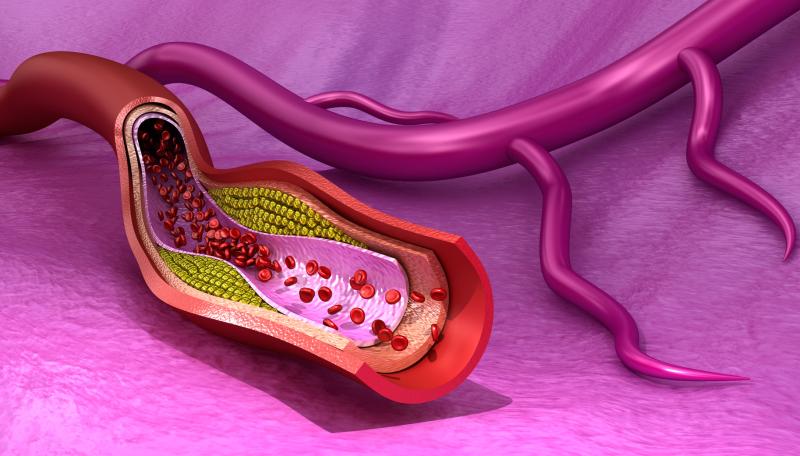
In patients with acute ST-segment elevation myocardial infarction (ASTEMI), the risk of new-onset atrial fibrillation (NOAF) appears to be linked with plasma levels of low-density lipoprotein cholesterol (LDL-C) and total cholesterol (TC), a recent China study has found.
Of the 985 ASTEMI patients (mean age, 63.4±12.6 years; 79.9 percent male) enrolled, 81 developed NOAF over 31 months of observation. The resulting incidence rate was 8.2 percent. These patients tended to present with significantly lower LDL-C, TC and triglyceride concentrations.
Multivariable logistic regression analysis found that, when grouped into tertiles of lipid concentrations, participants in the middle (odds ratio [OR], 0.46, 95 percent confidence intervals [CI], 0.22–0.98; p=0.044) and topmost (OR, 0.24, 95 percent CI, 0.1–0.58; p=0.002; p-trend=0.004) categories of TC benefited from significant protection against NOAF.
A similar and significant (p=0.001) trend was observed for LDL-C (middle tertile: OR, 0.23, 95 percent CI, 0.10–0.53; p=0.001; top tertile: OR, 0.38, 95 percent CI, 0.17–0.83; p=0.015).
In contrast, triglyceride levels and concentrations of high-density lipoprotein cholesterol were unrelated to the risk of developing NOAF.
In terms of outcomes, NOAF patients had an all-cause mortality rate of 19.8 percent. Kaplan-Meier analysis found that this was significantly higher than that in the sinus rhythm comparators (6.1 percent; log-rank p<0.001). Cardiogenic shock was likewise greater (17.3 percent vs 6.6 percent; p<0.001) and hospital stay was longer (10.1±5.3 vs 8.3±4.7 days; p=0.002) in the NOAF group.